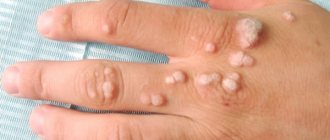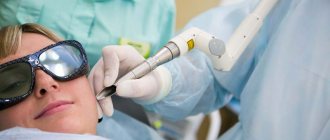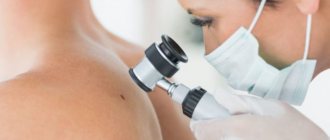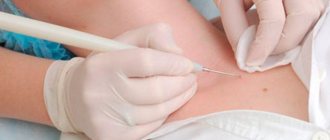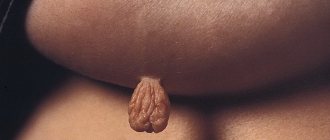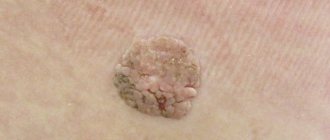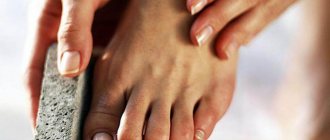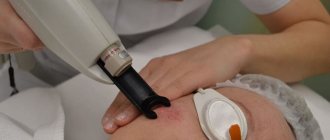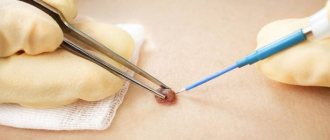From this article you will learn:
- How does laser removal of warts occur?
- What are the benefits of laser wart removal?
- What to choose: laser or nitrogen removal of warts
- How long does it take for a wart to heal after laser removal?
- What must be observed after removing a wart with a laser?
- What precautions does the wound require after laser removal of a wart?
There are several ways to remove warts. Most often, patients choose laser wart removal. The advantages are that it does not take much time and does not require long-term rehabilitation. In this article we will talk in more detail about the laser wart removal service.
How does laser removal of warts occur?
The most common skin disease is acne, followed by warts. Statistics say that 10% of people have the papilloma virus. The papillomavirus causes abnormal skin tissue, causing people to suffer from various diseases, ranging from warts to serious problems such as cervical cancer.
Warts come in different sizes: from 1 mm to 3 cm. They form on the mucous membranes, skin, and can be convex or flat. Once the virus has entered the human body, it cannot be removed and will remain for life. As soon as a person's immune system fails, a wart will appear.
Healthy people can easily become infected from carriers of the infection through shared objects, household appliances, or sexual contact. There is a high risk of infection on the beach, in the pool, sauna, bathhouse and other places where large numbers of people relax. The papillomavirus dies when exposed to sunlight, so the risk of infection in the evening and at night is significantly higher.
Recommended articles on the topic:
- Painless lip modeling: techniques and recommendations
- Beauty injections: types, preparations, reviews
- Eyelash restoration at home and in a beauty salon
A person may not realize that he has become infected, even for several months, because signs of the disease appear only after 2-5 months. Not only a decrease in immunity provokes the appearance of warts, but also the following factors:
- Tight and uncomfortable, synthetic shoes.
- Sweaty feet.
- Metabolic disease.
- Endocrine pathology.
- Acrocyanosis of the limbs.
- Sudden hypothermia.
- Stress.
- Fungal and other infectious diseases.
- Insufficient hygiene.
- Lack of nutrients in the body.
- Casual sex.
- Failure to comply with the rules of asepsis and antiseptics during manicure and pedicure.
Laser removal of warts is carried out only after consultation with a dermatologist or cosmetologist. Wart cells are 75% water. Laser installations evaporate this liquid, due to which the neoplasm is removed. The removed material is subsequently subjected to histological analysis. During the procedure, one of various laser systems is used:
- CO2 laser - pathological tissues are destroyed, the liquid is evaporated using a laser beam. A CO2 laser emits infrared radiation with a wavelength of 10,600 mn. The disadvantage of this method is that after the procedure scars may remain on the patient's skin.
- The erbium laser is very similar to the CO2 laser, only it has a shorter wavelength - 2940 mn, and is twelve times more effective. Another advantage of this laser is that it is less traumatic to tissue.
- A pulsed dye laser leaves virtually no scars and does not cause discomfort to the patient during the procedure. Unlike CO2 laser and erbium laser, it has a selective effect on oxyhemoglobin, leading to the destruction of wart capillaries.
Read material on the topic: Removing moles on the face without pain and consequences
Causes of warts
Warts appear as a result of infection with the human papillomavirus (HPV) (papilloma is the medical name for warts). The virus enters the skin where the integrity of the skin is broken - for example, as a result of microtrauma (abrasions, cuts, scratches, etc.). The appearance of cracks in the skin or increased sweating of the hands also contributes to the penetration of the virus.
The infection can be transmitted both by contact (shaking hands) and through household objects. You can become infected in public places: baths, swimming pools, public showers.
The incubation period of HPV ranges from 6 weeks to 6 months. However, the penetration of the virus into the body does not necessarily lead to the appearance of warts. According to various studies, from 70 to 90% of people are affected by the human papillomavirus. In most cases, the virus is in an inactive state and does not manifest itself in any way. The transition of the virus to an active state occurs at the time of weakening of the immune system. This is when warts appear.
What are the benefits of laser wart removal?
Removing warts with a laser is not the only way to get rid of tumors. There are radio waves, cryosurgery, electrocoagulation and other methods, each of which has advantages and disadvantages. But still, one of the most effective methods is laser, as it has the following advantages:
- There are no scars or rough scars left on the body.
- The doctor can control the depth of penetration of the laser beam.
- One session is enough to completely remove tumors.
- Fast healing after the procedure.
- Method sterility and safety.
- With the help of a laser, warts can be removed from any part of the body.
How to get rid of warts in 15 minutes?
At the Gradient clinic, qualified dermato-oncologist surgeons will carefully examine the formations, determine their type and how to solve your situation. Warts can be removed on the same day of treatment - the procedure is comfortable and painless, using local anesthesia.
After removal, the doctor will recommend care for speedy healing. If necessary, antiviral treatment will also be prescribed. If there is any doubt about the benign quality of the formation, the removed sample will be sent for histology. You can be sure that the procedure is safe!
The most modern and effective solution to the problem of warts is laser removal using a CO2 laser.
What to choose: laser or nitrogen removal of warts
The most popular methods for removing warts and other unwanted growths are laser and cryodestruction. If a person decides to remove the tumor, he needs to choose a method.
If the wart is in a visible place, such as on the face, then it is better to choose laser because it does not leave scars.
Nitrogen does not penetrate into the deep layers of the skin, so if you choose cryodestruction, there is a high probability that several procedures will be needed, especially if the tumor is large. Cryodestruction is cheaper than laser, but causes pain.
If you decide to undergo the procedure, consult a dermatologist about which method of wart removal to choose. Laser is more effective, but also more expensive. Cryodestruction is more affordable, but most likely it will take several sessions to completely get rid of the wart.
Why are traditional methods of treatment dangerous?
Many people remember cauterization with celandine, iodine and vinegar from childhood. Some people removed warts using a silk thread, while others applied hot metal objects to them to burn them out! All these methods are not only ineffective in the fight against warts and HPV, but also dangerous to human health.
As a result of such “home” treatment, a child or adult can receive multiple burns, scars and welts, and removal with a thread only provokes further growth and spread of papillomas on the skin.
We live in the 21st century, where there are modern methods of treatment and correction that are safe for health. If you find papillomas on the skin or mucous membranes, first make an appointment with a dermatovenerologist or gynecologist. The doctor will prescribe treatment and, if necessary, refer you to a surgeon for quick removal of the papilloma.
The MC “Health” network welcomes doctors - gynecologists, dermatovenereologists and surgeons with extensive experience. Hundreds of patients come to appointments with external manifestations of HPV, and our specialists consider each case individually - prescribe the necessary tests and studies, adjust treatment, and help quickly cope with the disease. You can make an appointment with any doctor on the clinic’s website.
Don’t delay the examination and get treatment from professionals!
How long does it take for a wart to heal after laser removal?
Removing a wart with a laser practically does not injure the skin, but in any case there is a burn that heals in three stages.
At the first stage , a scab is formed, that is, a crust that protects the wound from infection.
At the second stage, gradual healing of the wound under the crust occurs.
At the third stage , the scab is rejected and the skin is restored. Young skin, of course, will initially be lighter, that is, the site of the removed wart will be visible, but subsequently the color will become the same as that of nearby tissues.
To ensure that the wound does not become inflamed or fester after laser removal of a wart, you need to take care of it, so the healing process will go faster. The healing period depends on many factors, which are indicated in the table.
| Factors | Duration of wound healing |
| Size and shape of the wart. | If the papilloma is less than a centimeter in diameter, the wound after the procedure will heal in two weeks. If the wart is more than a centimeter in diameter, the wound will heal within a month. |
| The state of the body's immune system. | With strong immunity, the recovery period will be minimal. |
| Accurately follow the doctor’s recommendations after the operation. | The wound must be taken care of so that infection does not get inside, otherwise healing will take several months. |
Types of warts
There are several types of warts.
Common (vulgar) warts
They are outgrowths up to several millimeters in size with a rough surface. The color of such a wart varies from yellowish-brown to dirty gray; At first it may match the color of the skin, then the wart darkens. Over time, the wart increases in size, the surface becomes rough and uneven, and cracks may cover it. Most often, common warts appear on the fingers, the back of the hands, and in children also on the knees. Quite often, around one wart, the so-called maternal one - the one that appeared first and largest, others, smaller ones, appear. Common warts are usually painless. Sometimes they can disappear on their own, but you shouldn't rely on this.
Flat (juvenile) warts
- formations that slightly rise above the surface of the skin and match its color. They have a flat surface, usually smooth, sometimes slightly rough. They occur in adolescents, mainly on the face, neck, and back of the hands. Flat warts are characterized by multiple rashes. Usually they disappear on their own. Lifespan ranges from several months to several years. If the skin is irritated in the area where flat warts appear, redness and itching may occur.
Plantar warts
occur on the sole in places where the skin is exposed to the greatest pressure or friction. They appear as small shiny bumps, then take on the appearance of an ordinary yellow or brown wart. They can reach large sizes - up to 2 centimeters in diameter. Under the influence of friction, the wart may begin to crumble. Sometimes such a destroyed wart looks like a pit with horny edges, at the bottom of which papillae are visible. Plantar warts are usually quite painful and cause great discomfort.
Filiform warts
usually appear with age. They are found in the armpits, groin, neck, under the mammary glands, around the eyes. They can be on a narrow or wide base. They look like elongated elastic formations (up to 5-6 mm), usually flesh-colored. Such warts can be easily injured.
A separate group consists of genital warts
– formations also caused by a special type of HPV. However, this type of virus is usually transmitted sexually. Genital warts are most often located on the genitals or in the anus, sometimes in the groin, armpits, under the mammary glands and in the corners of the mouth. In appearance they resemble a cockscomb or cauliflower.
What must be observed after removing a wart with a laser?
As a rule, you can wash yourself the next day, but it is still better to ask your doctor about this, because it all depends on the number of warts removed and the method of removal.
The following are rules that all patients must follow:
- After washing, the site of the former wart should not be dried with a towel.
- For two months it is forbidden to take baths, only showers are allowed, and no cosmetic product should come into contact with the wound. The site of the former wart should not be rubbed.
- After a shower, pat the wound dry with a paper towel or soft cloth.
- Solariums and swimming in public bodies of water are prohibited for two weeks after surgery.
- Baths and saunas are prohibited for two months.
- If the wart was in a place where hair grows, then hair can be removed only three weeks after the procedure.
Read material on the topic: Chemical peeling for the face
Hardware destruction methods
Some warts may involute spontaneously (that is, disappear without outside intervention), but when or if this will happen is impossible to predict.
Dermatologists recommend removing warts, even if they do not cause discomfort. Moreover, now it is extremely rare to resort to a scalpel when removing small benign tumors. Hardware methods are less invasive, simple, safe and characterized by a short recovery period after manipulation.
What precautions does the wound require after laser removal of a wart?
To prevent a scar or a scar after removing a wart with a laser, you should follow the recommendations listed below:
- Do not cover the wound with a band-aid to prevent inflammation due to the penetration of bacteria. The wound will heal faster if there is constant access to air. Over time, the crust will fall off, and in its place a new layer of epithelium will form.
- After removing the wart, treat the wound with brilliant green, healing ointments, potassium permanganate solution and other local disinfectants for three days. Chemicals and alcohol solutions are strictly prohibited.
- Even if you accidentally scratched the wart removal site and the scab began to separate prematurely, do not completely rip it off. Take the furatsilin solution, soak the separated area with it and carefully cut it off.
- The crust that has formed on the wound cannot be removed; it will fall off on its own.
- Avoid exposing the wound to sunlight; use sunscreen before going outside.
- If a wart has been removed in the intimate area, you can have sex only after the wound has completely healed. As a rule, this is one month.
- It is better not to use cosmetics until the color of the skin on the wound evens out with the surrounding tissues.
- If a month has passed since the wart was removed with a laser, and the wound has not healed, go to the doctor.
- After the procedure, it is recommended to take a course of vitamins E, A, C to make the skin more elastic, strengthen the immune system and restore the regenerative properties of the skin.
Read material on the topic: Dermatological facial cleansing: types, reviews and prices
What consequences are possible after removing a wart with a laser?
Removing warts with a laser is a gentle procedure, but the following consequences are possible:
- If the wound is not treated properly, it will take a long time to heal.
- An infection may occur, causing inflammation.
- The formation of scars and cicatrices, disruption of epidermal pigmentation, that is, a dark or white area may remain at the site of the wart.
- If the patient's skin is very delicate, thermal injury may occur. It can also occur if a specialist has configured the instrument incorrectly.
- Allergy to photo exposure and anesthesia.
scars remain after laser removal of warts ?
- Insufficient qualification of the surgeon.
- Predisposition of the patient's skin to scar formation.
- Failure to follow recommendations during the rehabilitation period leads to infection of the damaged surface.
- When large and deep warts are removed, a wound remains that deepens under the papillary layer of skin.
When removing warts with a laser on your hands, décolleté or face, think about how to protect yourself from scarring. Modern means for preventing rough scars help to retain water in the tissues, so connective tissue, which forms the basis of scars, is not formed. Use gels based on hydrocolloid substances.
When the crust that has formed on the wound falls off, apply one percent hydrocortisone ointment for a week and a half. The ointment will reduce the likelihood of scarring and promote rapid healing. Baneocin powder is also suitable. For prevention, purchase Mediderma, Panavir or Contractubex. The action of Panavir is based on the antiviral effect and suppression of DNA synthesis, which reduces the risk of the formation of new warts.
To break down dead tissue and increase skin elasticity, apply creams and gels containing fruit acids to the damaged area. This causes the scars to become flat and then lighten. It is important that the product you use includes hyaluronic acid, which creates a very thin film that maintains skin moisture, stimulates the synthesis of collagen and elastin fibers, and revitalizes rough tissue. Before purchasing medicinal cosmetics, you should consult your doctor.
It is important not only to choose the right product, but also to start using it as early as possible, because this way the scar will heal faster.
If, after removing warts with a laser, a large scar remains, most likely, procedures will be required to smooth it out: microwave therapy, cryodestruction or electrocoagulation.
Burn. During wart removal, the laser has the same effect on the patient's skin as the sun's rays, causing the treated area to turn red. If the patient has very sensitive skin, then after the procedure there is not only a burn, but also swelling and severe redness of the skin. Sometimes watery blisters appear. In this case, it is very important to follow the recommendations for caring for the wound, otherwise the patient may be left with a dark scar that will be very noticeable on the skin. If, despite good care of the treated area, the burn and redness do not go away, you should not self-medicate and should consult a doctor. The burn may become larger if the operated area is exposed to sunlight.
High temperature, inflammation, pain. The patient should not be alarmed if he experiences these symptoms, because this is a normal reaction of the body to laser wart removal. Redness and swelling sometimes appear in the wound area, which usually disappear within five days.
After removing a wart with a laser, the inflammation should subside within a few days. If the patient scratches the wound, an infection may occur, causing inflammation. Usually in such situations, the doctor prescribes antibiotics and antiseptics. An antiseptic is applied to the wound three times a day. To speed up healing, you can use local products to treat the wound. The doctor will advise how best to do this. The best antiseptic is potassium permanganate, which is used to treat the wound and its edges.
If the edges of the wound diverge, it hurts a lot. The wound may become inflamed and pus appears, which indicates that an infection has entered the wound, causing the pain to intensify. You should immediately contact the doctor who performed the procedure so that he can examine the painful area. The doctor will tell you which painkillers you should take. It is possible that you will need to put stitches or wash the wound with antiseptics.
If your temperature rises after laser removal of a wart, you should take paracetamol. This reaction of the body is explained by the fact that a small inflammatory process has begun.
Relapse. If there is HPV in the body, warts will appear again; this cannot be avoided.
Read material on the topic: Laser removal of papillomas - painless disposal of tumors
Electrocoagulation
Electrocoagulation uses a device that generates an electric current. The electrode or loop that the doctor manipulates becomes very hot. Essentially, the wart is “burned out,” which leads to its destruction. Vessels coagulate under the influence of high temperatures.
This method is considered the most painful of those listed - anesthesia is almost always required. Unfortunately, after electrocoagulation, warts sometimes recur, and the appearance of scars and pigment spots is possible. That is why electrocoagulation is used to remove tumors on open areas of the skin only when other methods are not available.
